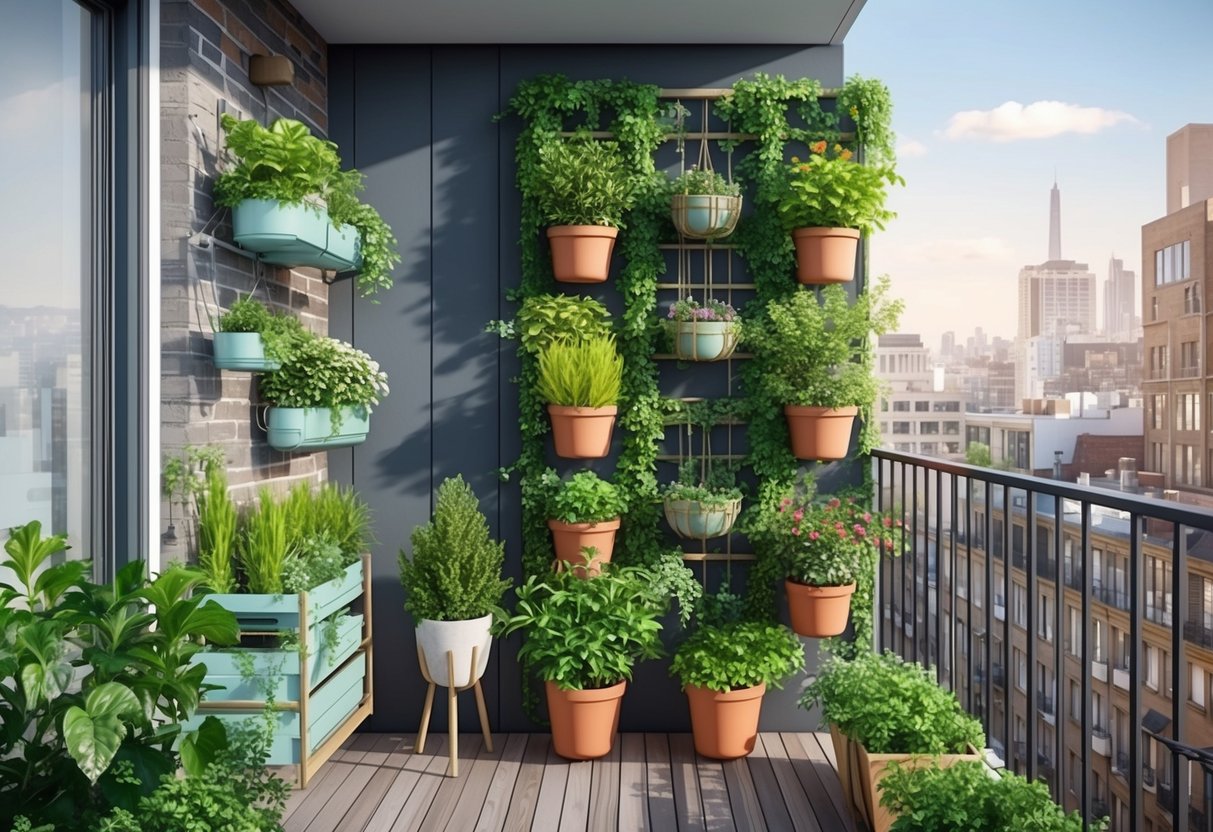
Living Walls and Green Wall Systems
Living walls, sometimes called green wall systems, offer a visually striking way to grow dense arrangements of plants vertically. These systems consist of panels, pockets, or trays that hold soil and plants up a wall, often with irrigation integrated.
Living walls excel at growing leafy greens, herbs, succulents, and even small flowers. Green wall systems are popular in both interior and exterior spaces, helping to improve air quality and add insulation.
Many kits allow for DIY setup in small apartments or larger home installations. When designing a living wall, it’s important to select plants suited for vertical growth and ensure that watering is even from top to bottom.
Some systems can also be customized with features like drip irrigation or moisture sensors for low-maintenance care. See ideas for setups at Martha Stewart’s vertical garden guide.
Garden Towers and Modular Systems
Garden towers and modular systems make vertical gardening possible in almost any environment. These structures use stackable or rotatable sections that accommodate individual plants in pockets or slots.
Garden towers are effective for vegetables, strawberries, and herbs, allowing easy access all the way around. Modular systems are highly flexible, letting gardeners add or rearrange components as needed.
This adaptability is valuable for tailoring a garden layout to fit balconies, patios, or indoor spaces. Many towers come with built-in composters or watering reservoirs to boost plant health.
Vertical garden enthusiasts can find inspiration and setup advice at resources like Kellogg Garden Organics’ guide to vertical gardens and improve results by choosing a system that matches their available space and crop choices.
Space-Saving Containers and Mounting Techniques
Choosing the right containers and mounting techniques is essential for maximizing space and encouraging healthy growth in vertical gardens. Various setups—hanging, wall-mounted, or freestanding—offer different benefits and suit distinct types of homes and plants.
Hanging Baskets and Containers
Hanging baskets and containers are ideal for limited outdoor or indoor spaces. They free up ground area and allow plants to get better sunlight exposure, especially on balconies or patios.
Lightweight plastic, wire, or woven baskets work best for most container gardening projects since they’re easy to install and move as needed. For best results, use quality potting soil and select trailing plants like strawberries, petunias, or herbs.
Sturdy hooks or ceiling anchors ensure baskets stay secure. When grouping hanging containers in a vertical arrangement, gardeners can create layers for additional visual interest and a higher yield.
Consider water retention and drainage; self-watering hanging containers may reduce maintenance. Moisture-loving species perform best in the uppermost tiers while drought-tolerant plants are suited for hanging baskets exposed to wind and sun.
This technique can be expanded for larger container gardens by connecting multiple baskets together in tiers.
Wall-Mounted and Freestanding Planters
Wall-mounted planters efficiently utilize vertical wall space, turning unused surfaces into productive garden areas. Popular options include pocket planters made from felt or fabric, modular containers, and mounted shelves.
These systems are excellent for growing herbs, leafy greens, or compact ornamentals in small homes or apartments. For more ideas, see options for vertical garden wall planters.
Freestanding vertical planters, such as tiered plant stands or stacked pots, can be placed indoors, on patios, or in small yards. Stacking containers or using shelf systems provides stability and easy access to every plant.
Arrange heavier or larger species at the bottom, with lighter, cascading plants above to balance weight and maximize sunlight as suggested for vertical garden stability.
Regular watering, proper drainage, and periodic fertilizing are key for flourishing wall-mounted and freestanding container gardens. With the right mounting techniques, even the smallest spaces can support a healthy range of edible and decorative plants.
Essential Watering and Irrigation Solutions
Efficient moisture management is vital for any vertical gardening setup, as plants in upright structures often dry out faster than those in traditional beds. Choosing the right watering system helps maintain healthy plant growth, conserves water, and simplifies maintenance.
Drip and Automated Watering Systems
Automated systems like drip irrigation are highly recommended for vertical garden installations. These systems deliver water directly to the roots, which not only limits evaporation but also supports consistent soil moisture levels.
As a result, water usage can be reduced by up to 80% compared to manual watering methods, making these systems efficient and eco-friendly. Drip irrigation can be programmed for specific schedules, reducing the risk of over- or under-watering.
This is especially important for structures with different plant varieties or those exposed to varying light and temperature conditions. Options range from simple, gravity-fed tubes to integrated smart systems.
Automated solutions also minimize daily labor and make vertical gardens more sustainable for those with busy lifestyles. See more about drip irrigation systems for vertical gardening for details.
Manual Watering Tips for Vertical Gardens
For those using manual watering methods, attention to technique is critical. Water should be applied evenly, starting from the top of the structure and allowing it to trickle down.
This approach supports even moisture distribution and reduces water waste. Using a long-spout watering can or hose attachment with a gentle spray pattern helps prevent soil displacement and avoids damaging delicate plants.
It’s best to water slowly, letting moisture soak into each pocket or planter before moving on. Regular checks of soil moisture are essential to avoid both under- and over-watering, as vertical gardening mediums can dry out unevenly.
Early morning is usually the best time to water because it minimizes evaporation while plants have time to absorb moisture before the day heats up. For more practical tips, visit This Old House’s guide to watering vertical gardens.